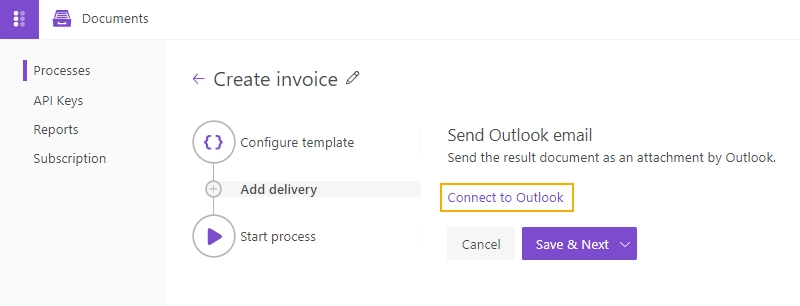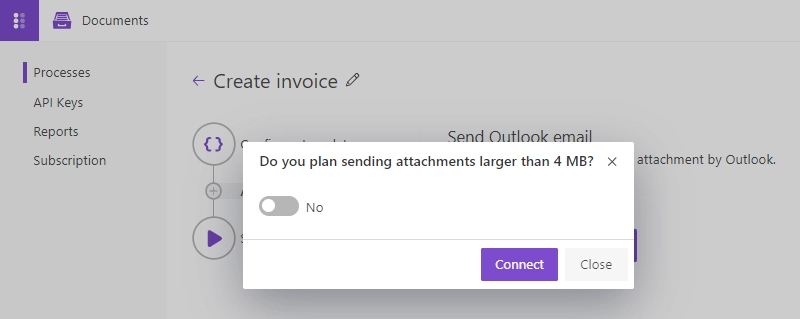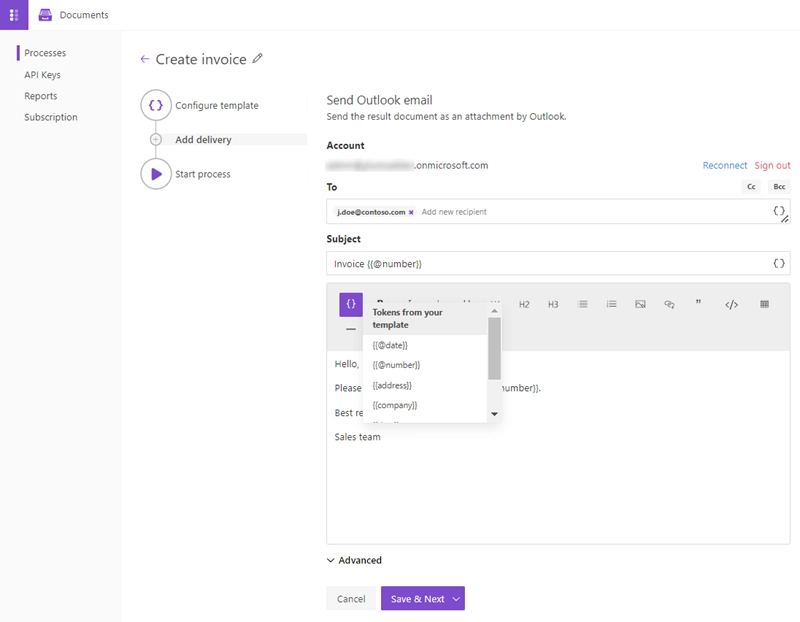Outlook delivery
The Outlook delivery will send the document generated by your process as an attachment using your Microsoft Outlook account. You can learn how to do it using the video below or by reading the guide after it.
First, you need to connect to your Outlook account from the Plumsail account.
Click Connect to Outlook during the Add delivery step of the process.

You’ll see a dialog that asks if you intend to send attachments larger than 4 MB.

If yes, the connection requires additional read/write permissions for the Outlook mailbox.
This is because large attachments are first uploaded to the mailbox and then sent with an email. The process requires write permissions for uploading the attachment and read permissions for composing an email message with this large attachment.

Note
You can connect to a personal Outlook account as well as to Outlook for business account. Please note that depending on the permissions policies in your company’s Microsoft 365 tenant you might require admin approval to grant access to our app.
Once you’re connected, you will see the Outlook delivery settings:

Just fill the To, Subject, and Body fields of delivery as you do in any email client. You can specify Cc and Bcc if need be.
Expand Advanced to set:
Reply-to. The default value is the currently connected Outlook address. You can replace it with another email address.

Use tokens to specify recipients
You can either manually specify the email address of recipients:

OR enter the email address as a token if the token exists in the source template.

The token may contain several comma-separated addresses:
{
"email": "john.smith@contoso.com, adam.allman@contoso.com"
}
Use tokens in email subject and body
You can insert values from your data using tokens.
Their list is available by clicking { }.
Let us assume your data has property address.
In this case, you can include it using token {{address}}.
The tokens work in the same way as in document templates including value functions.
Additionally, you can use predefined tokens:
{{@date}}- full current date with time,{{@number}}- the current document number.
Note